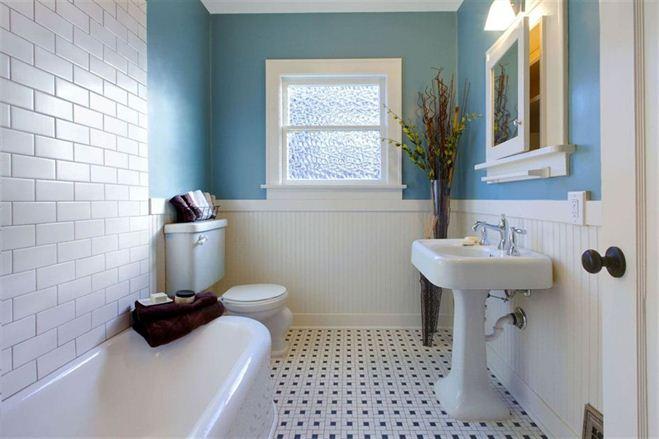
Your bathroom is probably the wettest space in your home, unless you’re fortunate enough to have an indoor pool. Like any other room, however, it can be prone to water damage if it’s not constructed and maintained correctly. There are, effectively, two ways of making your bathroom more waterproof: increasing the water resistance of the bathroom and decreasing the moisture levels.
The first method is often largely done for you. Homebuilders will always build a bathroom with some level of waterproofing, otherwise, the bathroom would be infested with mould and destroyed by moisture.
There are three things you can waterproof in a room: the walls, the floor, and the ceiling. Almost all bathrooms have waterproof or resistant floors – think tile floors. You can extend this waterproofing to the walls by tiling them also. While you won’t see too many tiled ceilings out there, finding a waterproof paint for your ceiling can alleviate some potential problems.
Showers and sinks are already waterproof by design. What’s important to look at is the space between your fixtures and your floors and walls. That’s where caulking comes in. How often you should recaulk is the subject of much debate. Fresh caulk should, hypothetically, last about five years, but various factors can make it degrade more quickly. You can actually see deterioration – if your caulk looks like it needs to be replaced, it probably does. Fortunately, the project isn’t too difficult and you can probably do it yourself.
No material is truly immune to water; the slow march of time gets everything in the end. While your home can be designed with water resistance in mind, things deteriorate, and the best way of slowing that deterioration is reducing the amount of moisture in the air. Your bathroom should have an exhaust fan installed to vent out any steam. A lot of people shut that fan off after they leave the bathroom but it might actually take about 30 minutes before all the water vapour is removed.
You might also consider reducing the moisture in your bathroom by changing your habits. Take shorter showers or crack the window open a little.
You can also reduce the amount of water flowing through your bathroom by installing low-flow faucets and shower heads. The principle behind these fixtures is that air replaces water, giving you adequate pressure while lowering your water bill and reducing moisture. You can get an amazing shower with a low-flow head. Plumbers in Winnipeg can help you select and install new low-flow fixtures. What’s more, Manitoba Hydro provides free kits for low-flow faucets and shower heads.
Keep in mind that all of the waterproofing we’re doing is at the surface level. In other words, if a pipe begins to leak, waterproofing won’t protect you because the leak will be inside the walls. When there are big wet spots in your bathroom walls, it’s probably a good time to call a plumber.
